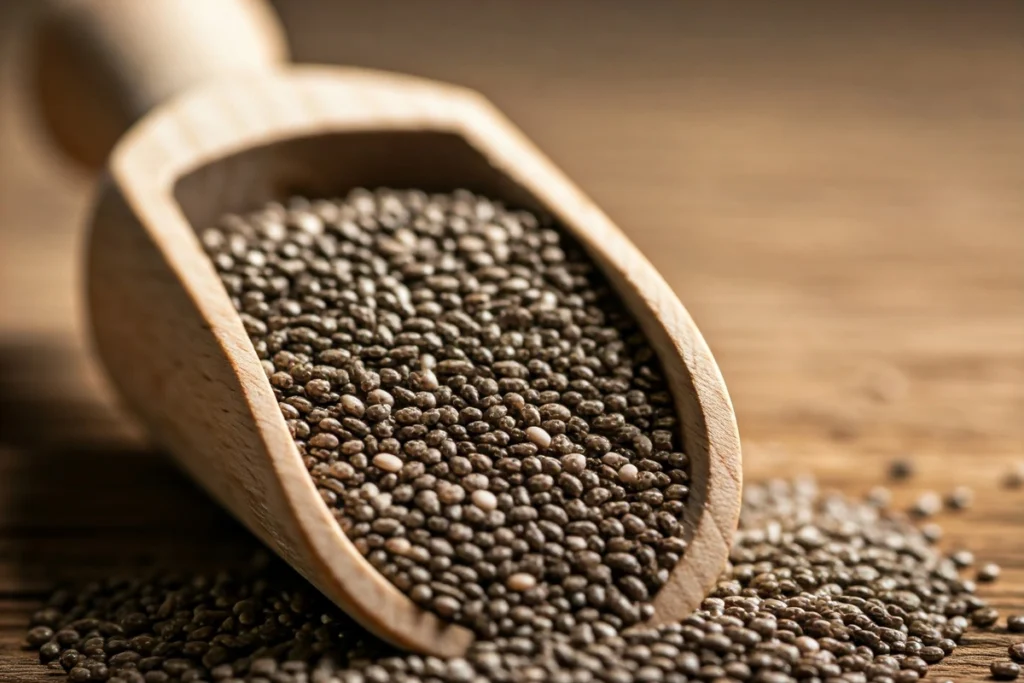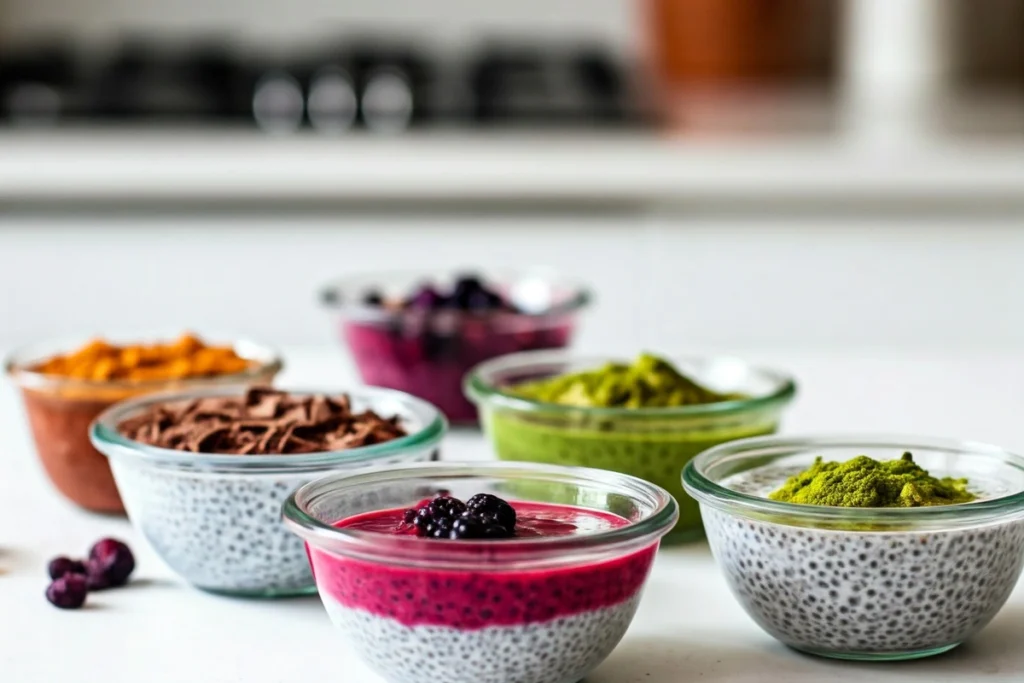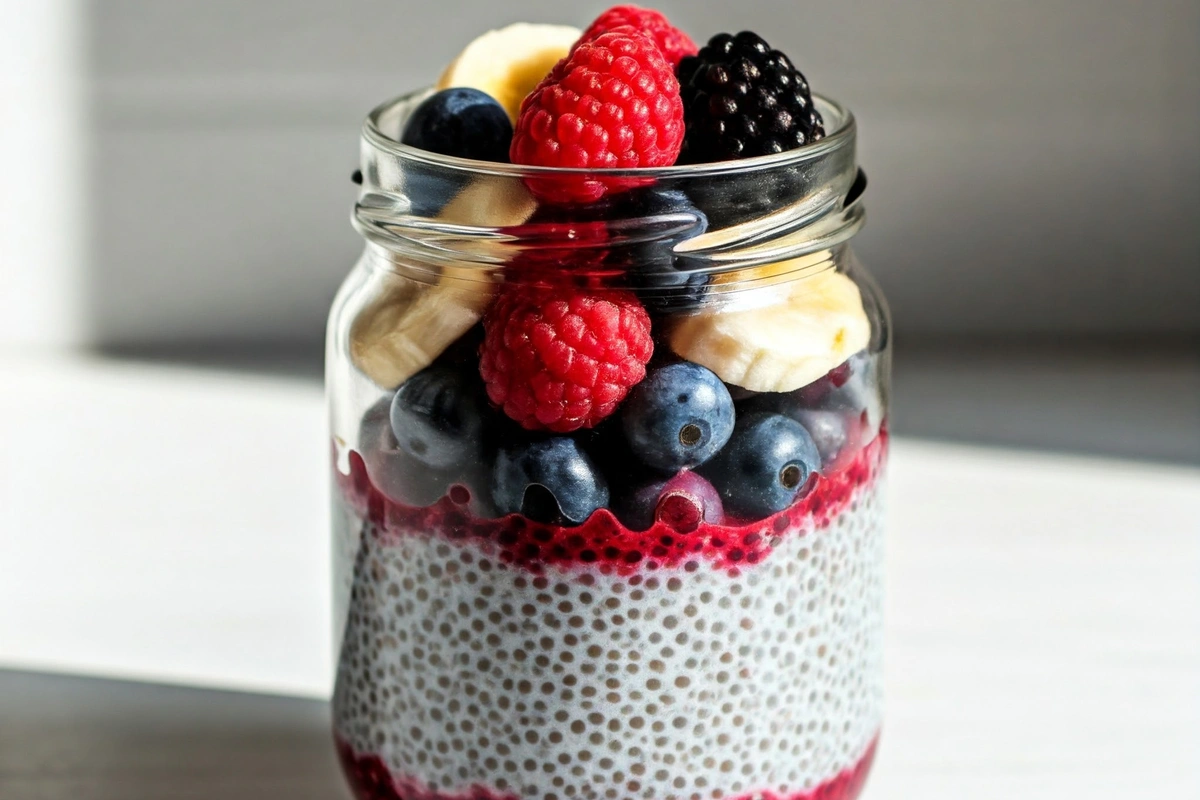Discover if daily chia seed pudding is beneficial. Learn about health perks, potential risks, and tips for safe, delicious consumption every day.
Is it okay to eat chia seed pudding every day? Understanding the Basics
Many health enthusiasts adore chia seed pudding for its satisfying texture and nutritional profile. Yet people often ask, “Is it okay to eat chia seed pudding every day?” This question arises because consistency in our diet can influence overall health. In many cases, daily consumption of chia seed pudding can be beneficial. However, it is essential to consider individual dietary needs. After all, each person’s body reacts differently to food choices.
Chia seeds come from the Salvia hispanica plant, originally native to Central and South America. These tiny seeds pack a huge nutritional punch, especially when soaked to create a pudding-like texture. They absorb several times their own weight in liquid. This leads to a smooth, gel-like consistency. For this reason, chia seed pudding has become a convenient breakfast or snack option. You can customize it with fruits, nuts, and sweeteners, making it quite versatile.
Still, is it okay to eat chia seed pudding every day? It might be, if you balance your intake of nutrients. Chia seeds contain fiber, healthy fats, and plant-based protein. Because of these attributes, many believe that a daily serving can be part of a healthy diet. Nonetheless, you should learn about potential concerns and how to manage portion sizes. Some individuals may experience digestive discomfort from too much fiber. This is why it is critical to consider your own health status and any advice from healthcare providers.
Is it okay to eat chia seed pudding every day? A Closer Look
When people ask, “Is it okay to eat chia seed pudding every day?”, they often worry about overconsumption. Chia seeds are dense in fiber, which assists with digestion and helps you feel full. However, excessive fiber can cause bloating or gastrointestinal distress in some cases. Still, if you start with smaller portions and gradually increase your intake, your body usually adapts to the added fiber. Furthermore, drinking ample water aids in minimizing potential side effects.
Daily chia seed pudding can provide a steady supply of omega-3 fatty acids, which are known to support heart health. In addition, these seeds are rich in minerals like calcium, magnesium, and phosphorus. That means you get more than just fiber. You also benefit from essential micronutrients. Therefore, it is crucial to understand the benefits and possible downsides. By doing so, you can make informed decisions about whether a daily serving aligns with your personal health goals.
Additional Reasons to Enjoy Chia Seed Pudding
- Convenience: It takes only minutes to prepare. You can soak chia seeds overnight and wake up to a ready-made breakfast.
- Versatility: Blend it with various fruits, spices, or even cacao powder for multiple flavor profiles.
- Nutrition: Chia seeds offer a unique combination of protein, fiber, and good fats, ensuring a filling meal or snack.
Is it okay to eat chia seed pudding every day? Benefits and Potential Advantages
Is it okay to eat chia seed pudding every day? That question often stems from the impressive nutritional content of chia seeds. These seeds contain several key nutrients that can support your well-being, especially when eaten consistently but in reasonable amounts. Below is a quick table illustrating chia seeds’ approximate nutrient content per 100g, which forms the base for many chia seed pudding recipes.
| Nutrient | Approximate per 100g |
|---|---|
| Calories | ~486 kcal |
| Protein | ~16 g |
| Total Fat | ~30 g |
| Omega-3 | ~17 g |
| Carbohydrates | ~42 g |
| Fiber | ~34 g |
| Calcium | ~631 mg |
| Iron | ~7.7 mg |
| Magnesium | ~335 mg |
Key Takeaways:
- Chia seeds are comparatively rich in plant-based protein.
- They are high in fiber, which aids digestion and helps maintain regular bowel movements.
- They contain considerable amounts of calcium, which can support bone health.
- Omega-3 content makes chia seeds a valuable addition for heart health.
Heart Health and Weight Management
Many wonder, “Is it okay to eat chia seed pudding every day?” specifically in relation to weight management. Chia seed pudding can be a satisfying and low-calorie meal, depending on added sweeteners or toppings. The fiber content helps you feel fuller for longer, which may reduce unnecessary snacking. Additionally, these seeds provide healthy fats, especially omega-3s, which can promote heart health when combined with a balanced diet.
Incorporating chia seed pudding into your daily routine can also help regulate blood sugar levels. The soluble fiber in chia seeds forms a gel-like substance that slows sugar absorption in the bloodstream. Consequently, this may stabilize energy levels, reduce sugar crashes, and support a well-managed blood sugar profile over time. Nonetheless, individuals with specific conditions like diabetes should monitor their carbohydrate intake carefully.
Micronutrients and Antioxidants
Fiber and healthy fats often receive the spotlight. However, chia seeds contain various micronutrients that make regular consumption appealing. They provide magnesium, which helps with muscle function and energy production. Meanwhile, their high antioxidant content can help combat oxidative stress in the body. Hence, daily chia pudding consumption may offer a steady supply of these vital compounds.
While it is not the only source of these nutrients, chia seed pudding can serve as a convenient meal or snack. Its inherent creaminess, combined with fresh fruit, can deliver a sweet yet nutrient-dense start to your day. Even so, diversifying your diet ensures you receive a broad range of vitamins and minerals. Therefore, treat chia pudding as part of a broader nutritional strategy.
Is it okay to eat chia seed pudding every day? Possible Side Effects and Concerns
Is it okay to eat chia seed pudding every day? Potential Digestive Issues
Is it okay to eat chia seed pudding every day? The answer sometimes depends on individual gut tolerance. Chia seeds are high in fiber. That can bring wonderful benefits, but too much can result in bloating or gas. Especially in individuals unaccustomed to high-fiber diets, a sudden increase may lead to discomfort. Gradually introducing chia seeds allows your system to adapt. Furthermore, staying hydrated is crucial because fiber absorbs water.
Additionally, some people have sensitive digestive tracts. They might find raw or unsoaked chia seeds irritating. Soaking seeds to form a pudding can alleviate some digestive strains by partially breaking down the fiber. This process makes it easier on your gut. Regardless, if you notice persistent discomfort, consider reducing your portion size or consulting a healthcare professional.
Is it okay to eat chia seed pudding every day? Interactions and Allergies
An overlooked question is, “Is it okay to eat chia seed pudding every day?” if you have certain allergies or conditions. Although chia seed allergies are rare, some individuals might experience mild reactions. Symptoms could include itching or discomfort around the mouth or throat. In extreme cases, allergic reactions require medical attention.
Additionally, if you are on medication—especially blood pressure or blood thinner meds—consult your doctor. Because chia seeds can influence blood pressure and clotting, daily intake might interact with these treatments. While not a widespread concern, caution is wise. When in doubt, you can undergo allergy testing or seek advice from a dietitian.
Balancing Omega-3 and Omega-6 Ratios
Chia seeds are known for their high omega-3 content, particularly alpha-linolenic acid (ALA). Nonetheless, consuming large amounts of ALA without balancing other essential fatty acids might lead to disproportionate fatty acid ratios. Most Western diets already have an excess of omega-6. Boosting omega-3 can be beneficial. Still, a balanced approach is best. Salmon, walnuts, and flaxseeds can also contribute to a well-rounded intake of healthy fats.
Is it okay to eat chia seed pudding every day? Best Practices for Daily Enjoyment

Is it okay to eat chia seed pudding every day? Expert Recommendations
Many dietitians agree that chia seed pudding can be part of a healthy diet. The question, “Is it okay to eat chia seed pudding every day?” generally yields positive feedback. However, portion control and dietary balance remain key. Experts often suggest incorporating a variety of proteins, fruits, and vegetables in addition to chia pudding. By doing so, you avoid relying on one single food source for the bulk of your nutrients.
Moreover, if you plan to consume chia seed pudding daily, consider rotating flavors or toppings. You might choose to add berries, bananas, or even chopped nuts. Another day, you may opt for cocoa powder or peanut butter to switch things up. This diversity not only enhances your nutrient intake but also keeps your taste buds engaged. Ultimately, the best approach is to remain mindful of your body’s signals. If you feel any adverse effects, adjust accordingly.
Flavor Ideas for Consistent Enjoyment
If you decide, “Yes, it is okay to eat chia seed pudding every day,” the next step is variety. Repetitive meals can become dull. To maintain excitement, experiment with different recipes:
- Tropical Twist: Mix coconut milk with pineapple chunks and shredded coconut.
- Berry Blast: Stir in strawberries, blueberries, and a dash of honey.
- Chocolate Delight: Add unsweetened cocoa powder, almond milk, and a hint of vanilla extract.
- Peanut Butter Banana: Mash a ripe banana and blend with peanut butter and cinnamon.
- Green Matcha: Whisk matcha powder into almond milk or soy milk, then top with fresh berries.
By introducing new flavors, you avoid palate fatigue. Consequently, you remain more likely to enjoy daily chia pudding. It also encourages the inclusion of various vitamins and antioxidants from fruits or other ingredients. This fosters a more balanced overall diet.
Creating Healthy Chia Seed Pudding
Choosing the Right Liquid
Your choice of liquid greatly affects the final texture and taste. Dairy milk can yield a creamier consistency, but plant-based alternatives like almond or coconut milk are also popular. Comparatively, water is the least flavorful option. However, you can boost taste with sweeteners or fruit purees if you opt for water.
Sweeteners in Moderation
Chia seed pudding is naturally mild. Many people add sweeteners such as honey, maple syrup, or stevia. Nonetheless, sweeteners can spike sugar levels if used excessively. Choose natural options in small amounts. Pair that with fruit to amplify sweetness. Likewise, you can incorporate spices like cinnamon or nutmeg to create a delightful fragrance without relying solely on sugars.
Soaking Time and Texture
When making chia seed pudding, a common recommendation is to let the mixture soak for at least two hours, ideally overnight. This allows the seeds to fully expand. Hence, your pudding attains its signature gel-like form. If you prefer a thicker texture, simply add more seeds or reduce the liquid. If you want a smoother consistency, stir the mixture or blend it briefly before serving.
Adding Toppings and Mix-Ins
Elevate your daily chia seed pudding by layering it with crunchy elements. For example, sprinkle toasted nuts, shredded coconut, or granola on top. Alternatively, swirl in Greek yogurt or mashed fruit for extra creaminess. By varying toppings, you can transform the same base recipe into an entirely different meal. This approach encourages you to keep enjoying chia pudding without boredom.
Chia Seed Pudding and Overall Wellness
Holistic health involves more than just a single food. Is it okay to eat chia seed pudding every day? Possibly, but your broader lifestyle habits matter too. Sleep, hydration, and physical activity play major roles in maintaining energy levels and supporting immune function. Chia seed pudding can be part of a well-rounded approach, providing fiber, omega-3s, and essential nutrients. However, it should not replace whole meals or overshadow balanced eating patterns.
Complementary Foods
While chia pudding is a powerhouse in many ways, try pairing it with other nutrient-dense foods. Enjoy a fruit salad, a side of scrambled eggs, or a bowl of leafy greens. Eventually, this synergy of varied nutrients supports comprehensive well-being. Each food type offers unique vitamins and minerals. By blending them, you optimize your daily intake.
Balancing Macros
Chia seeds provide protein and fat, but not in extremely large quantities. If your goal is to build muscle or increase protein intake, incorporate other protein sources. These might include poultry, fish, tofu, or beans. Meanwhile, healthy carbohydrates from whole grains, vegetables, or fruits can complement the fiber in chia seeds. Hence, you achieve a more balanced macro distribution.
Storing and Meal Prepping
If you embrace daily chia seed pudding, consider meal prepping. Store your pudding in individual containers for convenience. Most versions last about five days in the fridge, especially if they are sealed tightly. You can portion out toppings separately to maintain crunch or freshness. This approach makes busy mornings easier. Additionally, if you have a variety of flavors prepped, you can alternate each day.
Freezing Options
Chia seed pudding can be frozen, though it may slightly alter the texture. If you choose to freeze, do so in airtight containers. Thaw the portion overnight in the fridge, and stir well before eating. Nonetheless, some people find the texture less appealing after freezing. Experiment to see if it meets your taste preferences.
Social Aspects of Chia Seed Pudding
Chia seed pudding has gained popularity on social media, with people sharing colorful breakfast bowls. This trend motivates others to ask, “Is it okay to eat chia seed pudding every day?” They see the endless creative ways to garnish or layer pudding. While aesthetics can be fun, prioritize nutrition and balance. Social media can inspire fresh ideas, but remember that each body is unique. What works for one influencer may not align with everyone’s health needs. Eventually, moderation remains the cornerstone of any diet plan.

Conclusion
So, is it okay to eat chia seed pudding every day? The concise answer is yes, in most cases. Nevertheless, it depends on personal factors like digestive tolerance, dietary needs, and medical conditions. Chia seed pudding can deliver significant fiber, protein, and healthy fats in a convenient format. It also offers a canvas for variety, enabling you to add fruits, nuts, or even savory elements. At the same time, you must remain alert to potential side effects like bloating or allergies.
Ultimately, no single food guarantees overall health by itself. A balanced, varied diet is still essential. Chia seed pudding can serve as an integral part of that diet, especially if you rotate flavors and remain mindful of your sugar intake. If you observe negative reactions, simply adjust portions or frequency. With moderate consumption, chia seed pudding can be a daily treat that supports your wellness goals. Thus, enjoy your chia-based breakfasts or snacks, but do so with knowledge and prudence. By striking this balance, you can reap the benefits of chia seeds while keeping your diet both interesting and nutritious.
Frequently Asked Questions
Q1: Does chia seed pudding taste better with dairy or plant-based milk?
That depends on your preference. Dairy milk often yields a creamier texture. However, plant-based options like almond or coconut milk can add unique flavors. Experiment to find what you like best.
Q2: Can kids eat chia seed pudding every day?
Children can usually enjoy chia seed pudding in moderation. It provides fiber and nutrients. Nonetheless, start with small servings to avoid overwhelming their digestive systems.
Q3: Should I worry about the calorie content?
Chia seeds are nutrient-dense but relatively low in calories when portioned properly. If you add sweeteners or high-calorie toppings, the total calorie count can increase significantly.
Q4: Is chia seed pudding good for weight loss?
It can help manage appetite due to its high fiber and protein content. Still, no single food alone drives weight loss. Combine chia pudding with balanced meals and regular exercise.
Q5: Can I prepare a big batch for the whole week?
Yes, you can. Stored in airtight containers, chia seed pudding generally stays fresh for about five days. To keep it interesting, vary toppings and stir well before eating.
Q6: How much chia pudding is recommended daily?
Portion sizes vary. Many people find success with 2-4 tablespoons of chia seeds per serving. If you feel discomfort, adjust accordingly or consult a nutrition professional.

